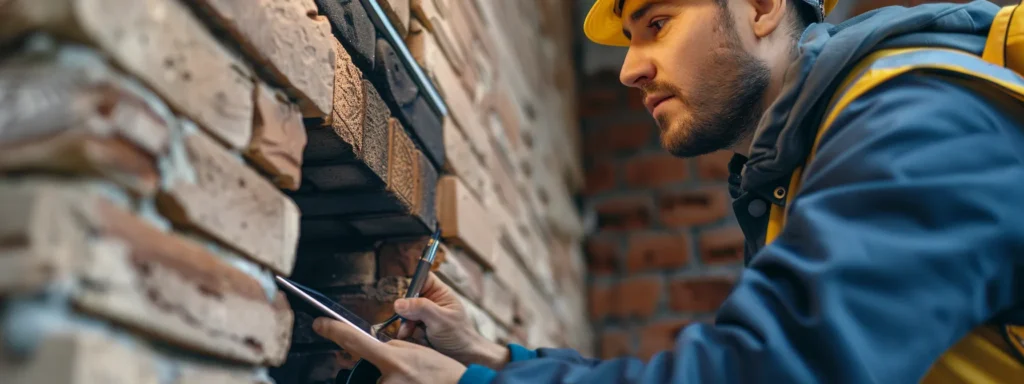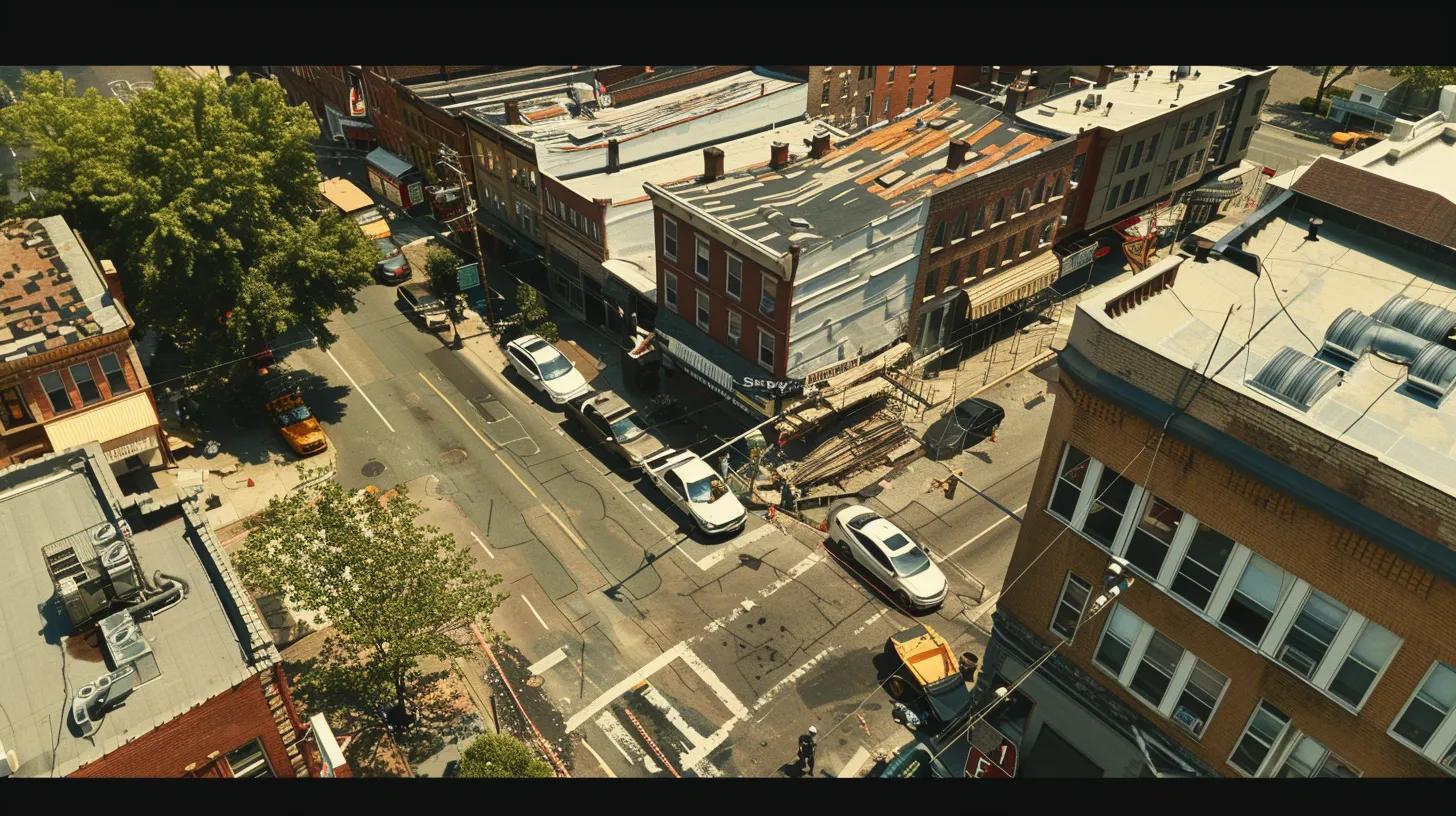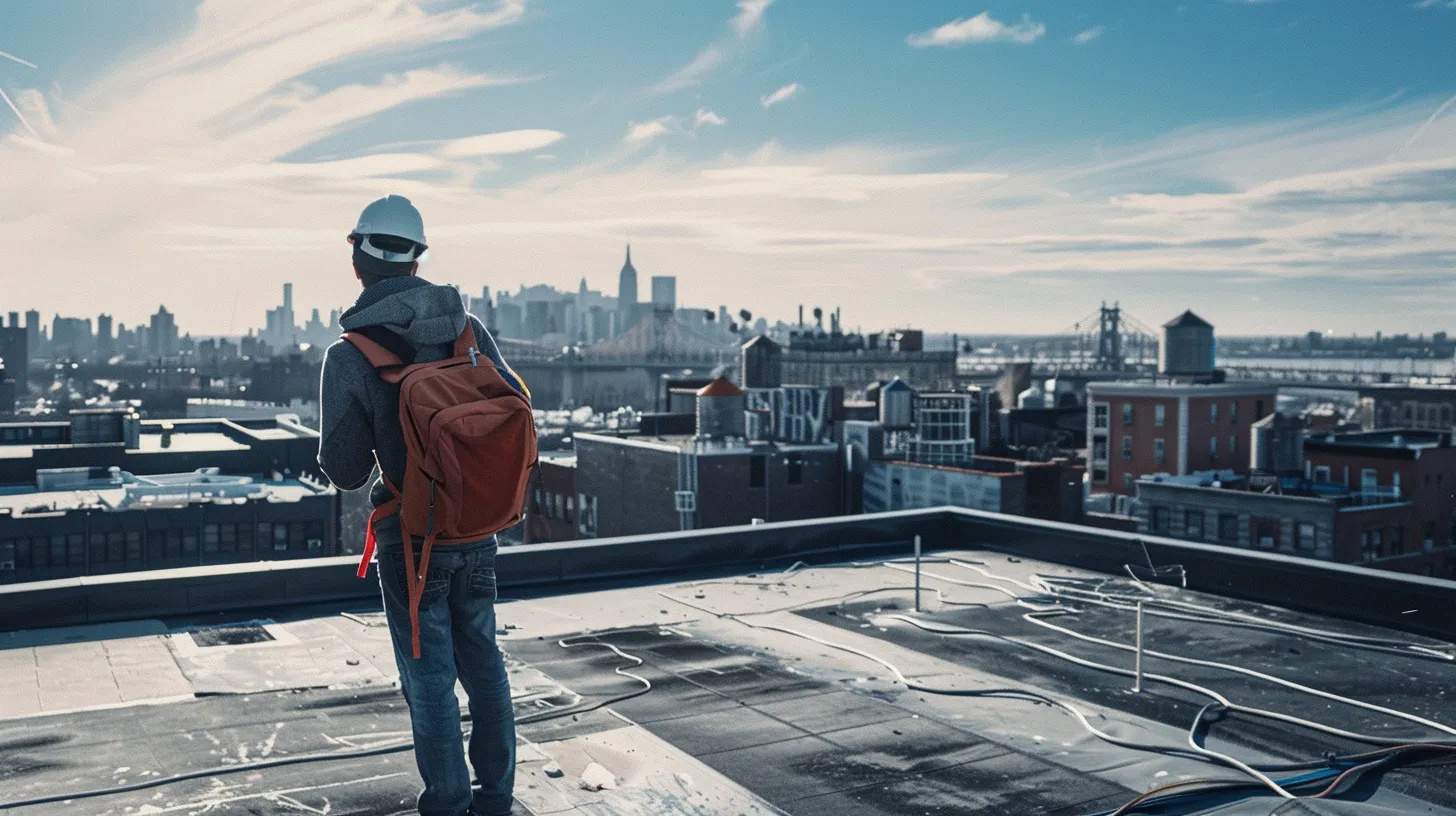What to Expect From Chimney Inspection Services
Chimney inspections are often overlooked, yet they play a crucial role in ensuring your home’s safety. Many homeowners may not realize that regular inspections can prevent costly repairs and potential hazards. In this article, readers will learn about the purpose of a local chimney inspection, the common issues professionals identify, and how to prepare for the process. By understanding these key aspects, homeowners can make informed decisions that enhance their property’s safety and efficiency while addressing any existing concerns.
Understanding the Purpose of a Local Chimney Inspection
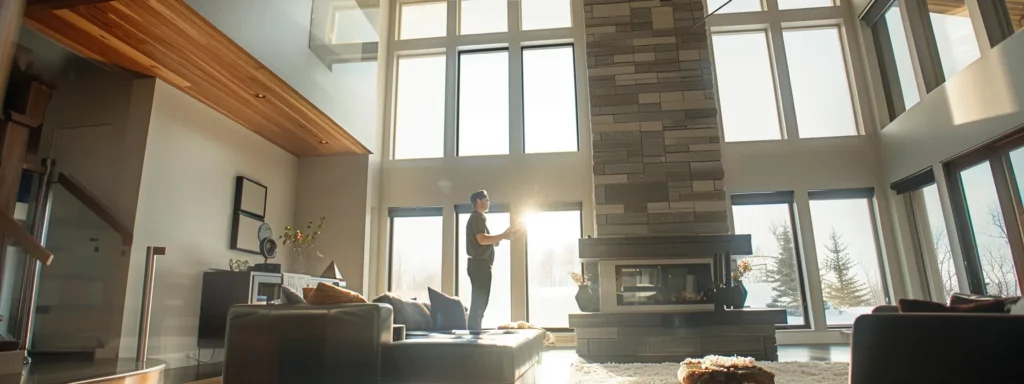
A local chimney inspection plays a vital role in ensuring the safe operation of a chimney system. This process identifies potential hazards that might affect structural integrity, especially in areas like Hudson Valley where construction regulations are stringent. Regular inspections also help homeowners comply with local policy requirements, ensuring that all aspects of the duct system—from the basement to the roof—meet safety standards.
Ensuring Safe Operation of Your Chimney
The proper functioning of a chimney is essential for the safety and efficiency of any home that uses wood as its primary heating source. Regular chimney inspections by trained professionals identify potential hazards, ensuring that every component—from flue liners to caps—is in optimal condition. In many instances, the use of stainless steel components can enhance durability and reduce risks associated with deterioration over time.
Customers often overlook the importance of addressing minor issues promptly, which can lead to costly chimney repair down the line. For instance, creosote buildup can pose a significant fire hazard. By engaging expert professionals for routine inspections, homeowners can prevent serious damage and preserve the integrity of their chimney systems.
An effective inspection focuses on assessing the overall condition of the chimney, making it clear whether any immediate actions are necessary. This proactive approach not only protects the home and its occupants but also enhances the efficiency of wood-burning appliances. Ultimately, investing in regular inspections contributes to the longevity and safe operation of the chimney, ensuring peace of mind for homeowners.
Identifying Potential Hazards
Identifying potential hazards during a chimney inspection is crucial for maintaining safe operations in Staten Island homes. An inspection will examine key areas such as flashing, which plays a significant role in preventing leaks that can lead to structural damage. Water intrusion can compromise the chimney‘s masonry and create an environment that encourages deterioration, ultimately affecting the efficiency of the entire heating system.
Another critical aspect of chimney inspections involves detecting the presence of carbon monoxide, a colorless and odorless gas that poses serious health risks. A thorough inspection ensures that flue liners are intact and functioning correctly to facilitate proper venting of harmful gases. Homeowners who neglect this vital check may unknowingly expose their families to dangerous levels of carbon monoxide, which could lead to severe consequences.
Regular assessments of the chimney‘s condition not only help identify immediate hazards but also provide insight into long-term maintenance needs. For instance, a professional may recommend repairs or upgrades to chimney caps or flue systems to enhance overall efficiency. By addressing these concerns early on, homeowners can avoid costly repairs while ensuring their chimney system operates safely and effectively for years to come.
Complying With Local Regulations
Compliance with local regulations is an essential aspect of chimney inspection services. Homeowners must ensure that their chimney systems meet the safety standards set forth by local authorities to prevent potential hazards. Regular inspections help identify issues such as leaks or structural flaws that may violate these regulations, safeguarding both the property and the occupants within.
Local building codes often dictate specific requirements for materials used in chimney construction, including the need for steel components that enhance durability and safe operation. Inspections assess whether the chimney fulfills these regulations, checking critical elements like flue liners and caps. By scrutinizing these components, inspectors can confirm that the system is certified for proper combustion and ventilation, which directly affects performance and safety.
Failing to comply with local regulations can lead to hefty fines and increased risks associated with chimney operation. Regular inspections provide homeowners with the peace of mind that they are adhering to safety standards and addressing any issues proactively. This preventative approach not only enhances longevity and functionality but also fosters a safe environment for families, decreasing the likelihood of hazardous situations and costly repairs in the future.
A local chimney inspection is not just a formality; it is an essential measure for safety and efficiency. Next, let’s look at the key components that make a thorough chimney inspection effective and reliable.
Key Components of a Local Chimney Inspection

Chimney inspections encompass several critical components that ensure safe and effective chimney operation. During an interior flue examination, chimney professionals identify potential carbon monoxide hazards and assess for any corrosion that may hinder performance. An exterior structure assessment checks for structural integrity, while a cap and crown inspection ensures proper protection against water intrusion. Finally, fireplace and hearth analysis evaluates the functionality and safety of home heating systems, including stoves. Each of these aspects contributes to a thorough understanding of the chimney‘s condition and necessary maintenance practices.
Interior Flue Examination
The interior flue examination is a critical component of chimney inspection services, focusing on the condition and safety of the flue that vents combustion gases from heating systems like furnaces and boilers. During this assessment, a qualified chimney sweep inspects for any built-up carbon deposits and evaluates flue liners for cracks or corrosion, which can pose serious safety risks. Ensuring that the interior flue is in optimal condition is essential for the effective venting of harmful gases.
Caught in the chimney, creosote and soot buildup can restrict airflow and lead to dangerous carbon monoxide emissions. A skilled technician will thoroughly clean the flue during the inspection, preventing any potential hazards and enhancing the overall operation of the heating system. This proactive measure not only safeguards the household but also ensures that the furnace or boiler operates efficiently, ultimately resulting in better performance during colder months.
Exterior Structure Assessment
The exterior structure assessment is a fundamental element of chimney inspections, focusing on key components that affect safety and functionality. Inspectors look for signs of wear and tear, checking the chimney‘s crown, cap, and masonry for any visible cracks or deterioration that could compromise the system. Addressing these issues promptly can prevent further damage and ensure the chimney can effectively channel heat and smoke away from the home.
During this assessment, the expert chimney services team will also evaluate the alignment and stability of the chimney, ensuring it is securely anchored to the roof and not at risk of tipping or collapsing. A secure chimney structure is vital for maintaining safe operations and protecting the firebox and surrounding areas from potential hazards. Homeowners are encouraged to request service for any detected faults promptly to mitigate risks associated with chimney operation.
Additionally, the exterior inspection encompasses attention to the flashing, which prevents water leaks that could lead to structural damage. Properly installed and maintained flashing is essential to preserving the integrity of the chimney and the surrounding roofing materials. By prioritizing regular chimney inspections, homeowners can safeguard their properties and ensure the long-term efficiency and safety of their heating systems.
Cap and Crown Inspection
The cap and crown inspection is essential for maintaining the integrity of a chimney system. This assessment focuses on the top components designed to protect the flue and prevent water intrusion, which can lead to serious structural damage over time. Certified chimney professionals in New York City ensure that these elements are secure and functioning properly, thus enhancing the overall indoor air quality by preventing harmful gases from leaking into the home.
During the cap and crown inspection, the trained expert evaluates the condition of the chimney cap—a critical component that shields the flue from debris, animals, and moisture. A well-maintained cap not only extends the lifespan of the chimney but also contributes to effective air duct services by allowing for proper venting of gases. If the cap is damaged or missing, homeowners may face increased risks related to carbon monoxide exposure and reduced efficiency of their heating systems.
Addressing issues identified during a cap and crown inspection can lead to significant long-term benefits for homeowners. Immediate repairs or replacements can prevent more extensive damage to the entire chimney system, and, in turn, enhance the overall safety of the dwelling. By prioritizing this aspect of chimney inspections, residents can ensure their homes remain safe, functional, and compliant with local regulations, ultimately promoting a healthier living environment.
Fireplace and Hearth Analysis
The fireplace and hearth analysis is a critical aspect of chimney inspection services that ensures safe operation and efficiency. Technicians meticulously examine the fireplace structure for any signs of wear, damage, or obstruction. This thorough evaluation helps identify underlying issues that could affect performance, providing homeowners with actionable insights to maintain their systems effectively.
A technician will also focus on vent cleaning during the analysis, ensuring that all pathways for exhaust gases are clear and functioning optimally. Proper venting is vital for preventing backdrafts and carbon monoxide buildup, thus safeguarding the health of the household. Homeowners are encouraged to schedule regular analyses to avoid potential hazards and extend the longevity of their fireplaces.
Moreover, if any structural issues are discovered, such as cracks or missing mortar, repointing may be recommended to restore the integrity of the fireplace and hearth. Addressing these concerns promptly not only improves safety but also enhances the overall aesthetic of the home. With strong customer service at the core of chimney inspection services, homeowners can expect clear communication and guidance from their technicians throughout the process.
A thorough inspection reveals much about a chimney’s health. Next, let’s uncover what professionals specifically seek during this vital process.
What Professionals Look for During an Inspection
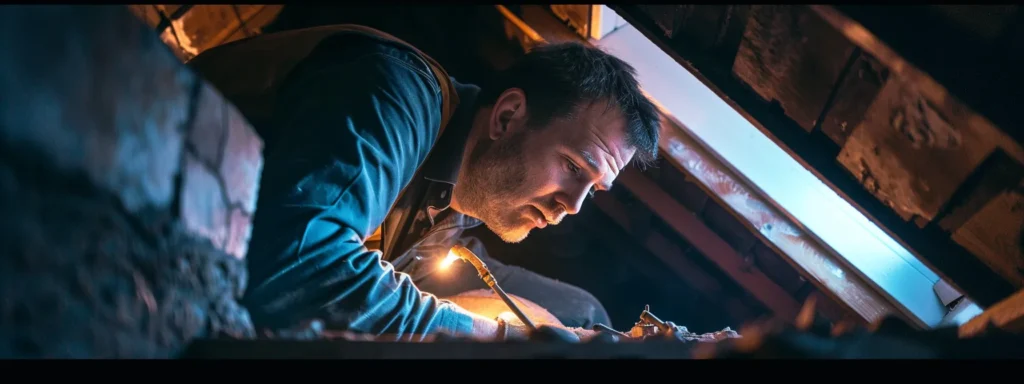
During a chimney inspection, professionals focus on several critical areas to ensure safe operation and efficiency. They look for signs of damage or wear that could compromise the structure, assess creosote buildup that may present fire hazards, and check for blockages or obstructions that could disrupt airflow. Addressing these aspects is essential for effective chimney repairs and safeguarding appliances like gas stoves, while also preventing water damage through proper waterproofing measures for both the chimney and fireplace.
Signs of Damage or Wear
Professionals begin their inspection by examining the entire chimney structure, searching for any signs of damage or wear that could impact safety and functionality. Visible cracks in the masonry or flue often indicate underlying issues that need immediate attention. In regions like Queens, where weather conditions can be harsh, such wear may lead to significant structural compromises if not addressed promptly.
Inspectors assess the caps and crowns for the accumulation of debris, as this can obstruct proper ventilation and lead to water intrusion. Failure to remove obstructive materials can cause long-term damage and affect indoor air quality. A clear understanding of any blocks or obstacles can significantly enhance customer satisfaction, ensuring a well-functioning chimney system that keeps homes safe.
During the evaluation, experts also pay close attention to the attic space, looking for any indications of leaks or signs of deterioration stemming from the chimney. These issues can lead to significant problems, including mold growth, which can pose health risks. Identifying and addressing such concerns early ensures that homeowners maintain a safe environment and optimize the performance of their heating systems.
Creosote Buildup Assessment
During a chimney inspection, chimney experts meticulously examine for creosote buildup, a highly flammable substance formed from incomplete combustion of wood. The National Fire Protection Association recommends that homeowners be aware of the risks associated with creosote since excessive accumulation can lead to dangerous chimney fires. Regular assessments ensure that this hazardous material is identified and removed promptly, enhancing the overall safety and efficiency of the chimney system.
Chimney experts in Long Island often highlight the importance of monitoring creosote levels for maintaining energy efficiency in wood-burning heating systems. When creosote deposits accumulate, they obstruct airflow and can significantly impact the performance of the chimney, resulting in increased fuel consumption. By addressing creosote issues during inspections, homeowners can optimize their energy use and lower heating costs while ensuring safe operation.
Checking for Blockages or Obstructions
During a chimney inspection, professionals meticulously check for blockages or obstructions that can significantly affect airflow. In the Bronx, where harsh weather conditions and outdoor debris are common, inspectors look for materials like leaves, nests, and soot accumulations that can restrict the chimney‘s ability to vent properly. This blockage not only diminishes efficiency but also poses risks, including the potential for toxic gas backdrafts.
Identifying obstructions is critical to maintaining a safe heating environment. A qualified technician will assess the complete venting system, including flue liners and caps, to ensure unrestricted airflow. If any blockages are detected, prompt action will be advised to prevent hazardous situations that could arise from improper venting.
By addressing blockages during chimney inspection services, homeowners can enhance the efficiency of their heating systems while ensuring safe operation. This proactive approach helps prevent costly repairs and fosters a healthier living environment. Regular inspections allow homeowners in the Bronx to maintain effective airflow, ultimately contributing to the long-term function of their chimney systems.
The keen eyes of professionals reveal many secrets about a chimney‘s health. What they uncover often points to common issues that demand attention.
Common Issues Found During Inspections
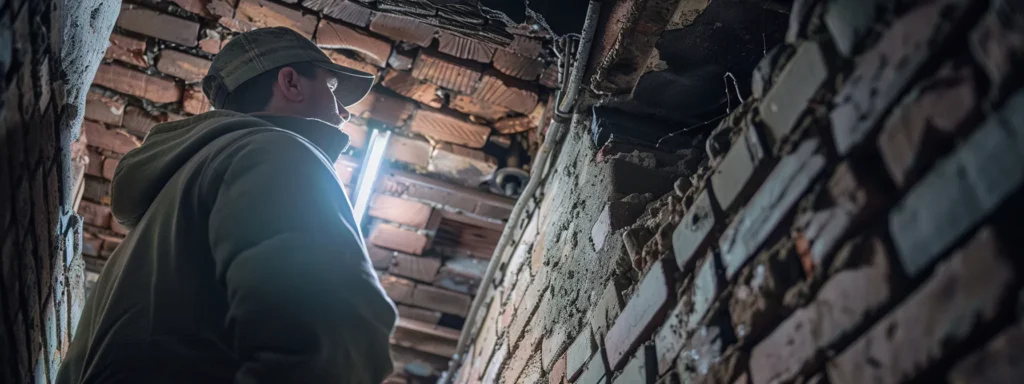
Chimney inspections often reveal issues such as cracks and deterioration, which can compromise safety and functionality. Unstable or loose components may pose risks, while improper ventilation concerns can lead to hazardous gas buildup. Addressing these common issues ensures optimal performance and safety of the chimney system, highlighting the importance of regular, professional inspections for homeowners.
Cracks and Deterioration
Cracks and deterioration are common findings during chimney inspections that can significantly impact safety and functionality. Over time, exposure to harsh weather conditions can weaken the masonry, leading to visible cracks that may allow water intrusion and further structural damage. Addressing these issues early on can prevent costly repairs and ensure the longevity of the chimney system.
During a professional inspection, technicians will assess the extent of cracks and any signs of deterioration, such as loose bricks or crumbling mortar. These conditions not only compromise the chimney‘s structural integrity but can also lead to inefficient venting, increasing the risk of toxic gas buildup within the home. Homeowners should recognize the importance of addressing these concerns promptly to maintain a safe and efficient heating environment.
Unstable or Loose Components
During chimney inspections, technicians often encounter unstable or loose components that can significantly compromise safety. These issues may manifest in various parts of the chimney structure, such as the flue, cap, or crown. Addressing these concerns promptly is essential to maintain the overall integrity of the chimney system and ensure reliable performance.
Unstable components can create dangerous situations, particularly if they jeopardize the chimney‘s ability to vent harmful gases effectively. For instance, a loose cap or a misaligned flue liner may allow toxic gases, like carbon monoxide, to escape into the home rather than being expelled safely outside. Regular inspections help identify these risks early, providing homeowners with the opportunity to make necessary repairs.
Improper Ventilation Concerns
Improper ventilation concerns can arise during chimney inspections, presenting significant risks for homeowners. When the chimney does not efficiently vent harmful gases, such as carbon monoxide, it can lead to dangerous backdrafts that allow these gases to seep into the home. A thorough inspection by trained professionals can identify blockages that hinder airflow and recommend remedies to restore proper ventilation.
Common causes of ventilation issues include debris accumulation, such as leaves and animal nests, which obstruct the chimney‘s flue. Additionally, a misaligned flue liner can disrupt the chimney‘s ability to vent exhaust gases correctly. Addressing these problems promptly not only enhances safety but also ensures that the heating system operates effectively, providing peace of mind to homeowners.
Chimney troubles often lurk unseen, waiting for the right moment to strike. Preparing for your local chimney inspection can save you from costly repairs and ensure your home stays safe and sound.
Preparing for Your Local Chimney Inspection
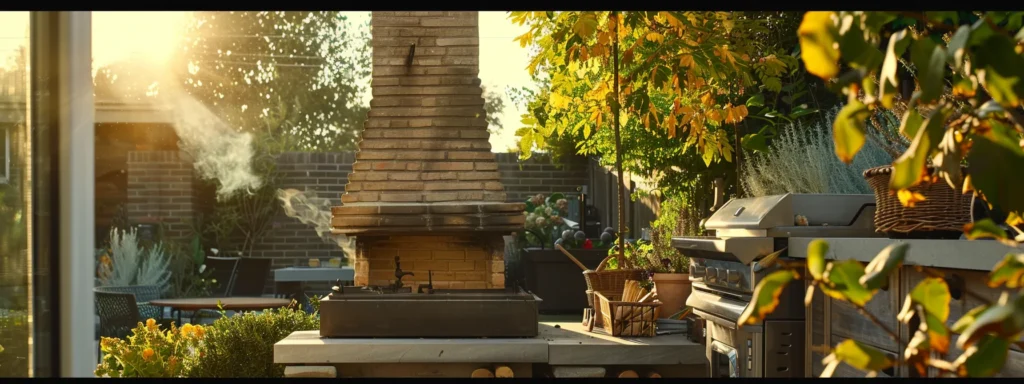
Homeowners should prepare for a local chimney inspection by taking a few essential steps. Clearing the area around the chimney allows inspectors unobstructed access to evaluate its condition. Ensuring that there is adequate access for inspectors and documenting previous maintenance records enhances the inspection process, providing crucial insights into any ongoing issues or repairs needed.
These preparations contribute to a thorough assessment and can improve the overall efficiency of the chimney system, ensuring safety and optimal performance.
Clear the Area Around the Chimney
Clearing the area around the chimney is a crucial preparation step for a local chimney inspection. Homeowners should remove any obstructions such as furniture, decorations, or outdoor equipment that may block access. This not only facilitates a thorough evaluation but also allows inspectors to examine the chimney and its components without any hindrance.
An unobstructed space enhances the inspection process, providing technicians with the visibility needed to identify potential hazards. For example, if the inspection team can easily access the chimney‘s base and surrounding area, they can more accurately assess any issues related to structural integrity or ventilation. This proactive measure significantly contributes to the safety and efficiency of the chimney system.
Furthermore, homeowners benefit from documenting any existing conditions surrounding the chimney before the inspection. Taking photographs or notes can help relay past maintenance issues or repairs to the inspection team. This information aids in their assessment, ensuring that no critical factors are overlooked during the chimney inspection process.
Ensure Access for Inspectors
Ensuring access for inspectors is a crucial step in preparing for a local chimney inspection. Homeowners should remove any obstacles that may obstruct the inspection team’s ability to evaluate the chimney effectively. By providing a clear path, the professionals can thoroughly examine the entire chimney structure, leading to a more accurate assessment of its condition.
Prioritizing access not only facilitates the inspection process but also contributes to identifying potential issues that may affect performance and safety. For example, ensuring that outdoor furniture or landscaping does not impede access to the chimney allows inspectors to assess vital components such as the flue and cap. This proactive approach ultimately supports the goal of maintaining the chimney‘s functionality and compliance with safety standards.
Additionally, homeowners should consider providing the inspectors with any relevant information about past repairs or maintenance conducted on the chimney. This transparency aids inspectors in their evaluation, allowing them to focus on areas that may require special attention. Ensuring clear access and sharing details fosters a productive inspection experience that benefits the homeowner in the long run.
Document Previous Maintenance
Documenting previous maintenance is crucial for homeowners preparing for a local chimney inspection. This record provides inspectors with valuable insights into the chimney‘s history, including past repairs, cleaning, and any recurring issues. Such documentation can significantly streamline the assessment process and help professionals focus on specific areas that may require special attention during the inspection.
Homeowners should compile any relevant service documents, including invoices and inspection reports, that detail previous work performed on the chimney system. This information aids in identifying patterns or problems that might affect the chimney‘s current condition. For instance, if there have been repeated concerns about creosote buildup or structural integrity, inspectors can prioritize these issues to ensure a thorough evaluation.
Having a comprehensive maintenance history reinforces the effectiveness of the inspection process. It allows for better communication between homeowners and inspectors, fostering a collaborative environment. Ultimately, thorough documentation not only improves the likelihood of identifying potential hazards but also contributes to the overall safety and efficiency of the chimney system, ensuring reliable performance in the long term.
As preparations unfold, the right experts become essential to ensure a thorough examination. Choosing skilled professionals can make all the difference in keeping your chimney safe and sound.
Selecting Local Chimney Inspection Experts
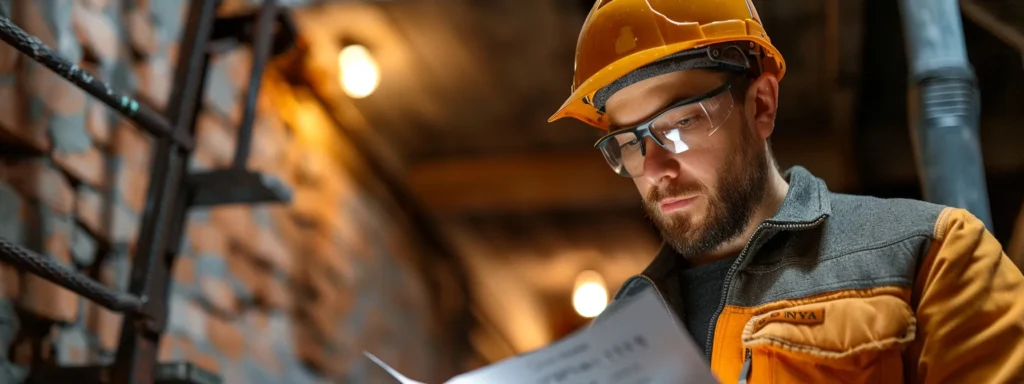
When selecting chimney inspection experts, homeowners should focus on several key factors. Checking credentials and certifications ensures that the professionals possess the necessary qualifications to perform safe and effective inspections. Reading customer reviews provides insight into the experiences of others, while understanding pricing structures helps in making informed budget decisions. These considerations are vital for ensuring quality and reliability in chimney services.
Checking Credentials and Certifications
When selecting chimney inspection experts, homeowners should prioritize checking for the right credentials and certifications. Professionals in the field often hold certifications from recognized organizations, such as the Chimney Safety Institute of America (CSIA), which ensures they are trained in safety standards and best practices. Verifying these qualifications can mean the difference between a thorough inspection and a subpar evaluation that might overlook critical issues.
Additionally, licensed chimney inspectors should be equipped with the necessary insurance coverage to protect both themselves and the homeowners. This coverage not only signifies professionalism but also safeguards against potential liabilities that may arise during the inspection process. Homeowners can feel confident knowing that certified experts conduct assessments that adhere to local building codes and regulations, contributing to a safer environment.
Reading customer reviews can further illuminate the track record of chimney inspection professionals. Positive feedback from previous clients indicates a commitment to quality service and ensures peace of mind for homeowners considering chimney maintenance. Engaging with certified professionals who are well-regarded in the community ultimately leads to effective inspections, enhancing the overall safety and function of chimney systems.
Reading Customer Reviews
Reading customer reviews is an essential step for homeowners seeking reliable chimney inspection services. These testimonials provide valuable insights into the experiences of others, helping potential clients gauge the quality and effectiveness of the services offered by local experts. Reviews often highlight aspects such as punctuality, professionalism, and the thoroughness of inspections, which can greatly influence a homeowner’s decision-making process.
Homeowners should pay attention to both positive and negative reviews to get a balanced perspective on the performance of chimney inspection professionals. For instance, recurring mentions of a company’s ability to identify potential hazards or their commitment to customer satisfaction can indicate a trustworthy provider. Conversely, consistent complaints about poor communication or inadequate service may raise red flags and prompt homeowners to consider alternative options.
In addition to evaluating the content of reviews, potential clients can benefit from observing how companies respond to feedback. A prompt and respectful response to negative reviews demonstrates that the chimney inspection service values customer input and is dedicated to improving its practices. This level of engagement is often indicative of a professional business that prioritizes its clients’ needs and upholds high standards of service in chimney inspections.
Understanding Pricing Structures
Understanding pricing structures for chimney inspection services is essential for homeowners seeking quality assessments. Typically, costs may vary based on factors such as the complexity of the chimney system, the scope of the inspection, and the experience of the professionals involved. For instance, a straightforward inspection of a traditional chimney may cost less than a comprehensive examination that includes specialized assessments for multi-story or intricate designs.
Homeowners should be aware that while lower prices might seem enticing, they may not guarantee thorough examinations. Investing in reputable chimney inspection services often results in a more detailed evaluation, identifying potential hazards that cheaper alternatives might overlook. By choosing certified professionals with positive customer feedback, clients can ensure they receive adequate attention to key components, safeguarding their home against future risks.
Moreover, understanding the pricing structure can also include inquiries about any additional services that may be necessary. For example, if an inspection reveals issues such as creosote buildup or structural damage, homeowners should be prepared for potential costs associated with required repairs or maintenance. By discussing these aspects openly with inspection providers, homeowners can gain a clearer picture of the overall investment needed to maintain a safe and efficient chimney system.
Conclusion
Chimney inspection services are essential for maintaining the safety and efficiency of heating systems in homes. By identifying potential hazards and addressing issues such as creosote buildup, cracks, and improper ventilation, homeowners can prevent costly damage and ensure compliance with local regulations. Regular inspections not only contribute to the longevity of the chimney but also promote a healthier living environment. Prioritizing these assessments empowers homeowners to take proactive measures, safeguarding their property and loved ones.

